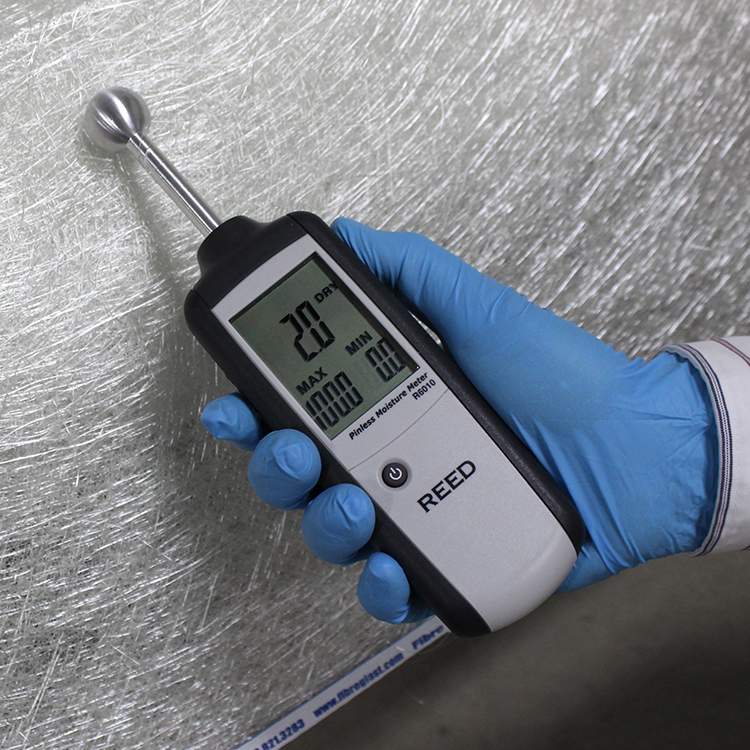Exactly how to Use a Moisture Meter to Spot Covert Water Damage in Your Building
Exactly how to Use a Moisture Meter to Spot Covert Water Damage in Your Building
Blog Article
Comprehending the Significance of a Moisture Meter in Stopping Mold and Water Damages in Your Home
In the world of home upkeep, the presence of moisture can frequently be a quiet yet formidable foe, capable of triggering prevalent mold and mildew development and perilous water damage if left uncontrolled. Recognizing the value of a dampness meter in this battle is not just a choice however a strategic requirement.
Significance of Moisture Detection
Effective wetness detection methods are vital for protecting homes and protecting against possible mold development and water damage. Wetness can leak right into various building materials, leading to architectural concerns and health threats. By making use of a wetness meter, property proprietors can proactively recognize areas prone to excess moisture, enabling for timely intervention and reduction strategies.
Moisture meters supply precise readings of dampness degrees in different materials such as concrete, timber, and drywall. This data helps in determining locations of issue, even in hidden or hard-to-reach locations. Early detection of wetness build-up enables punctual repair work or modifications to prevent additional damage.

Exactly How Moisture Meters Job
Dampness meters play a crucial role in the proactive recognition of excess moisture, helping in the avoidance of potential mold growth and water damages by giving accurate readings of moisture degrees in different structure materials. Some progressed moisture meters pin both incorporate and pinless technologies for extensive dampness detection. Recognizing how moisture meters function is vital for prompt and accurate wetness degree evaluations, enabling effective preventative measures against mold and mildew and water damage.
Detecting Early Indication
Upon preliminary evaluation of a building, identifying subtle signs of excess moisture comes to be critical in the early detection of potential mold growth and water damages. Some common early warning signs consist of moldy smells, water spots on ceilings or walls, peeling paint or wallpaper, and distorted or stained surfaces. Mildewy odors usually indicate the existence of mold or mold, even if no noticeable indicators appear. Water spots can signify leakages or infiltration, while peeling off paint or wallpaper might be a result of dampness endangering the bond of these materials to the surface area. Warped or stained surfaces, such as buckling floorboards or blemished drywall, are clear indicators of water damages. Furthermore, a rise in allergic reaction signs or breathing problems amongst owners might suggest the existence of mold and mildew because of excess wetness. By without delay determining and attending to these very early caution indicators, property owners can reduce the threat of substantial mold development and water damage in their residential or commercial properties.
Avoiding Mold And Mildew Development
Identifying very early warning indications of excess dampness within a home not just enables timely detection of possible mold and mildew development and water damage however his response additionally serves as a positive action in preventing the expansion of mold and mildew. To effectively avoid mold growth, it is important to resolve any sources of wetness without delay.
In enhancement to addressing moisture sources, keeping indoor humidity levels listed below 60% can dramatically hinder mold and mildew growth. Correct air flow, sufficient insulation, and utilizing ac system or fans can aid regulate interior moisture levels. Checking moisture degrees in areas prone to moisture, such as cellars and crawl spaces, utilizing a dampness meter can additionally assist in early discovery of elevated dampness levels and potential mold growth. By taking positive actions to stop excess wetness and mold and mildew growth, home owners can safeguard their property and interior air quality.
Advantages of Regular Surveillance
Routine surveillance of dampness degrees in a residential or commercial property can play an important function in maintaining a healthy and balanced indoor setting and avoiding prospective mold and mildew and water damages. By frequently inspecting wetness degrees, homeowners can discover any type of problems quickly and take needed activities to protect against mold and mildew development and water damages.
Additionally, normal surveillance permits home owners to track patterns and fads in wetness degrees gradually. By developing a baseline and monitoring changes, individuals can identify any locations of problem or possible susceptabilities in the residential or commercial property's structure. This data-driven approach makes it possible for targeted treatments and maintenance efforts to deal with underlying issues prior to her explanation they intensify into more significant troubles. Eventually, the consistent surveillance of moisture degrees equips homeowners to shield their building, guard their health and wellness, and maintain the honesty of Bonuses their indoor setting.

Final Thought

By using a wetness meter, property proprietors can proactively identify areas prone to excess moisture, enabling for prompt treatment and reduction methods.

Monitoring moisture degrees in locations vulnerable to wetness, such as cellars and creep rooms, using a moisture meter can also aid in very early detection of elevated dampness levels and possible mold growth. (Moisture Meter)
Report this page